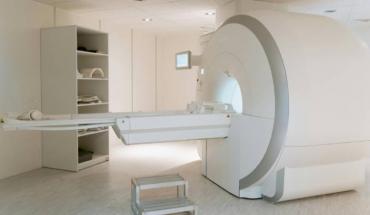Hemifacial Microsomia
What is hemifacial microsomia (HFM)?
Hemifacial microsomia (HFM) is a condition in which the tissue on one side of the face is underdeveloped, affecting primarily the aural (ear), oral (mouth), and mandibular (jaw) areas. Sometimes, both sides of the face can be affected and may involve the skull, as well as the face.
Hemifacial microsomia is also known as Goldenhar syndrome, brachial arch syndrome, facio-auriculo-vertebral syndrome (FAV), oculo-auriculo-vertebral spectrum (OAV), or lateral facial dysplasia.
What are the different types of HFM?
The deformity in hemifacial microsomia varies greatly in the degree of severity and in the area of the face involved. The disorder varies from mild to severe. In the more severe cases, the following structures are underdeveloped:
-
The external and middle ear
-
The side of the skull
-
The thickness of the cheek tissue
-
The upper and lower jaws
-
The teeth
-
Some of the nerves that allow facial movement
In the milder forms, only some of the structures are affected and to a lesser degree.
What causes hemifacial microsomia?
Hemifacial microsomia usually occurs sporadically (occurs by chance), but is thought to be inherited in some families. This is because of the many familial (cases occurring more than once in a family) cases reported. The following patterns of inheritance have been observed:
-
Autosomal dominant Autosomal dominant means that one gene is necessary to express the condition, and the gene is passed from parent to child with a 50 percent risk for each pregnancy. Males and females are equally affected and there is great variability in expression of the gene. In other words, a parent may unknowingly have a very mild sign of hemifacial microsomia, such as preauricular tags (skin tags by the ear), but the child is more severely affected. The family may not come to the attention of a geneticist until the birth of the child with a more severe condition. Other relatives with mild expression of the gene are often discovered at that time, confirming autosomal dominant inheritance.
-
Autosomal recessive Autosomal recessive means that two copies of the gene are necessary to express the condition, one inherited from each parent, who are carriers. Carrier parents have a one in four, or 25 percent, chance with each pregnancy to have a child with hemifacial microsomia. Males and females are equally affected.
-
Multifactorial Multifactorial inheritance means that "many factors" are involved in causing a birth defect. The factors are usually both genetic and environmental. Often one gender (either male or female) is affected more frequently than the other in multifactorial traits. There appears to be a different "threshold of expression," which means that one gender is more likely to show the problem, over the other gender. In hemifacial microsomia, males are slightly more likely to be affected than females.
Observations made from families who have one child with hemifacial microsomia show that the overall chance for another child to be born with hemifacial microsomia is about 2 to 3 percent. Parents and other family members should have a thorough evaluation to help give more definite recurrence information. In addition, hemifacial microsomia is sometimes found in children with various types of chromosome abnormalities. Chromosomes are the structures in our cells that carry our genes. Genes determine traits such as blood type and eye color. Chromosome abnormalities are usually sporadic (occur by chance).
Which parts of the facial bone are involved?
One of the most obvious problems in hemifacial microsomia is the underdevelopment of the upper and lower jaws on the affected side. It may appear that your child's mouth slants upward toward the involved side. Often the forehead and cheek are flattened on the affected side with one orbit (eye socket) smaller than normal.
What other areas of the face are affected?
Other areas of your child's face that may be affected by hemifacial microsomia include the following:
-
Your child may have unequal cheek fullness (asymmetry) because of the underdeveloped fat and muscle. Some parts of the face may not move normally, which may cause a "crooked" smile.
-
There is a wide range of ear abnormalities associated with HFM. Your child may have a mildly misshapen ear or almost complete absence of the external ear (atresia). Small tags of skin may also be present in front of the ear(s).
-
Occasionally, the central nervous system is affected, causing parts of the face to not move symmetrically (equally).
How is HFM diagnosed?
HFM is typically diagnosed after a comprehensive medical history and physical examination by a geneticist. There is not a blood test to diagnose HFM. Because the spectrum of severity is so wide, the diagnosis should come from an experienced geneticist skilled in diagnosing craniofacial anomalies. CT scans and x-rays of the face may also be ordered for accurate diagnosis.
Diagnostic tests that may be performed to confirm the diagnosis of hemifacial microsomia include:
-
X-rays of the head - a diagnostic test that uses invisible electromagnetic energy beams to produce images of internal tissues and bones of the head onto film.
-
Computed tomography scan (also called a CT or CAT scan) of the head - a diagnostic imaging procedure that uses a combination of x-rays and computer technology to produce horizontal, or axial, images (often called slices) of the head. A CT scan shows detailed images of any part of the body, including the bones, muscles, fat, and organs. CT scans are more detailed than general x-rays.
Treatment for HFM
Specific treatment for HFM is extremely variable because there are so many differences in the types of HFM. Any child with suspected HFM should be evaluated by a craniofacial anomalies team. Each of the specialists will have a proposed treatment plan depending on the severity of your child's specific physical findings.
After a diagnostic evaluation and meeting with a craniofacial team, the following treatment options may be discussed:
-
For severe underdevelopment of the lower jaw, reconstruction using a bone graft taken from the ribs may be suggested.
-
Another possibility to lengthen the underdeveloped mandible (jaw) would be to place a device on the jaw for bone distraction. This technique avoids the need for bone grafts.
-
The external ear is usually reconstructed between the ages of 6 to 8 years. This is a multiple stage process with several months between each surgery.
-
Further surgery in the soft tissue of the cheek to increase symmetry, or possibly jaw surgery, may be needed when your child reaches adolescence.
Why should my child be seen by a CFA team?
Because hemifacial microsomia involves so many areas of the body, many specialists are required, including the following:
-
The craniofacial surgeon performs the jaw surgery and ear reconstruction.
-
The geneticist counsels the patient and family regarding the recurrence risks of hemifacial microsomia.
-
The nurse coordinator acts as a liaison between the family and many specialists and assists in patient education.
-
The ophthalmologist evaluates vision and eye movements.
-
The orthodontist follows the jaw growth and alignment of teeth to assist the surgeon in an optimal result of jaw surgery.
-
The otolaryngologist assesses hearing abnormalities and coordinates middle ear surgery or hearing aides, if needed.
-
The speech therapist evaluates the speech development and coordinates speech therapy, if necessary.
-
The social worker assists the family in obtaining resources and referrals in their community.





















